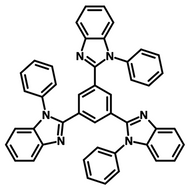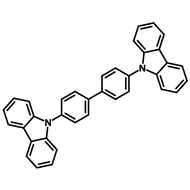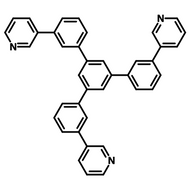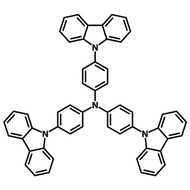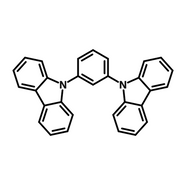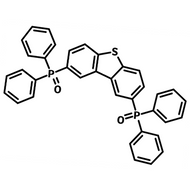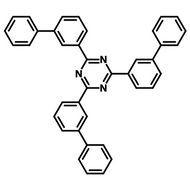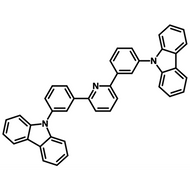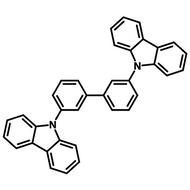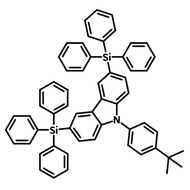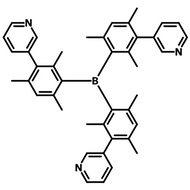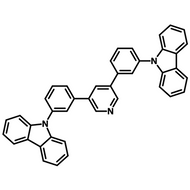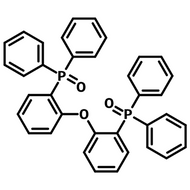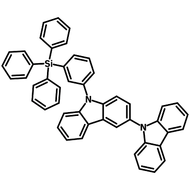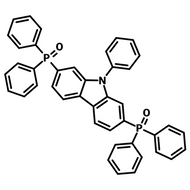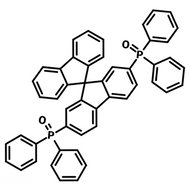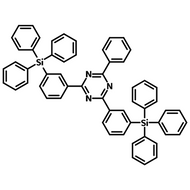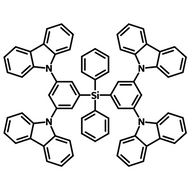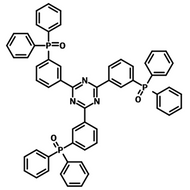TADF Materials
Thermally activated delayed fluorescence (TADF) materials are an alternative to fluorescent and phosphorescent compounds as light emitters for organic light-emitting diodes (OLEDs). TADF emitters can harness triplet state electrons, maximizing the internal quantum efficiency of TADF OLEDs. Advances in molecular engineering have led to the development of TADF materials with efficient intramolecular charge transfer, contributing to high device efficiencies.
TADF molecules, commonly referred to as third-generation OLED materials, offer the potential for high OLED efficiencies without the use of heavy metals. TADF OLED devices are set to be cheaper as TADF materials are available at a lower cost than fluorescent and phosphorescent materials. Current research aims to create a stable blue emitter with a usable lifetime something that has proved difficult with earlier generation OLED materials.
Explore our extensive range of TADF materials, including TPBi, 4CzIPN and CzSi, to find high-performance materials at an affordable price.
Jump to: Browse TADF Materials by Collection | Browse all TADF Materials | Resources and Support
Browse TADF Materials by Collection
Browse TADF Materials
Related categories: OLED materials, transport layer materials, OLED dopant materials, OLED host materials
Filter by price change:
Filter by molecular core:
Filter by number of carbazole groups:
Filter by carbazole substituents:
Filter by purification technique:
Page 1 of 4
Resources and Support
Thermally Activated Delayed Fluorescence (TADF) is a mechanism by which triplet state electrons can be harvested to generate fluorescence.
Read more...Hyperfluorescence organic light-emitting diodes (HF-OLEDs) represent the 4th generation of OLED technology. Find out more.
Read more...Intramolecular charge transfer (ICT) refers to the transfer of charge within a single molecule (intra = “within” in Latin). In molecules containing one or more electron donor and acceptor groups, ICT can occur if the molecule is in an excited state.
Read more... TADF Exciplex OLED Technology
TADF Exciplex OLED Technology
A thermally activated delayed fluorescence (TADF) exciplex is an excited-state species that can exhibit thermally activated delayed fluorescence or transfer its energy to a lower-energy emitter. TADF exciplex is formed between electron-donating and electron-accepting molecules by intermolecular charge transfer.
Read more... TADF Blue OLED Emitters
TADF Blue OLED Emitters
Among the various challenges faced in the development of organic light-emitting diodes (OLEDs), the quest for a highly efficient and stable blue emitter has remained to be one of the most difficult.
Read more...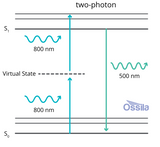 Two-Photon Absorption and Upconversion
Two-Photon Absorption and Upconversion
Two-photon absorption (TPA or 2PA) is a nonlinear optical process in which a material absorbs two photons simultaneously (or within a very short timespan) to excite an electron from a lower-energy state to a higher-energy state. The total energy of the two photons is equal to the energy difference between the two states.
Read more...Triplet-triplet annihilation (TTA) is an energy transfer process where two molecules in their triplet excited state interact to produce two singlet states: one molecule transitions to its singlet excited state and one molecule transitions to its singlet ground state
Read more...Multi-resonance TADF
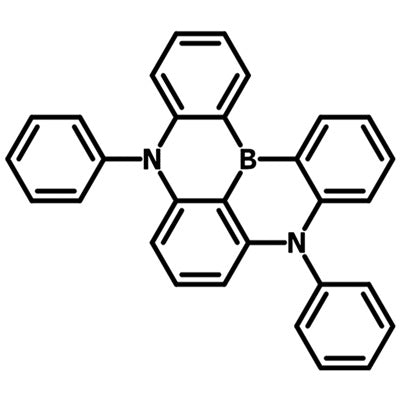 Multi-Resonance Thermally Activated Delayed Fluorescence (MR-TADF)
Multi-Resonance Thermally Activated Delayed Fluorescence (MR-TADF)
Multiple resonance thermally activated delayed fluorescence (MR-TADF) is a light emitting process engaging the same working principle as thermally activated delayed fluorescence (TADF).
Read more... Molecular Design Principles of MR-TADF Materials
Molecular Design Principles of MR-TADF Materials
The design of multiple resonance thermally activated delayed fluorescent (MR-TADF) materials requires careful selection of molecular scaffolds and substituents to achieve the desired photophysical properties i.e. color and color purity.
Read more...

